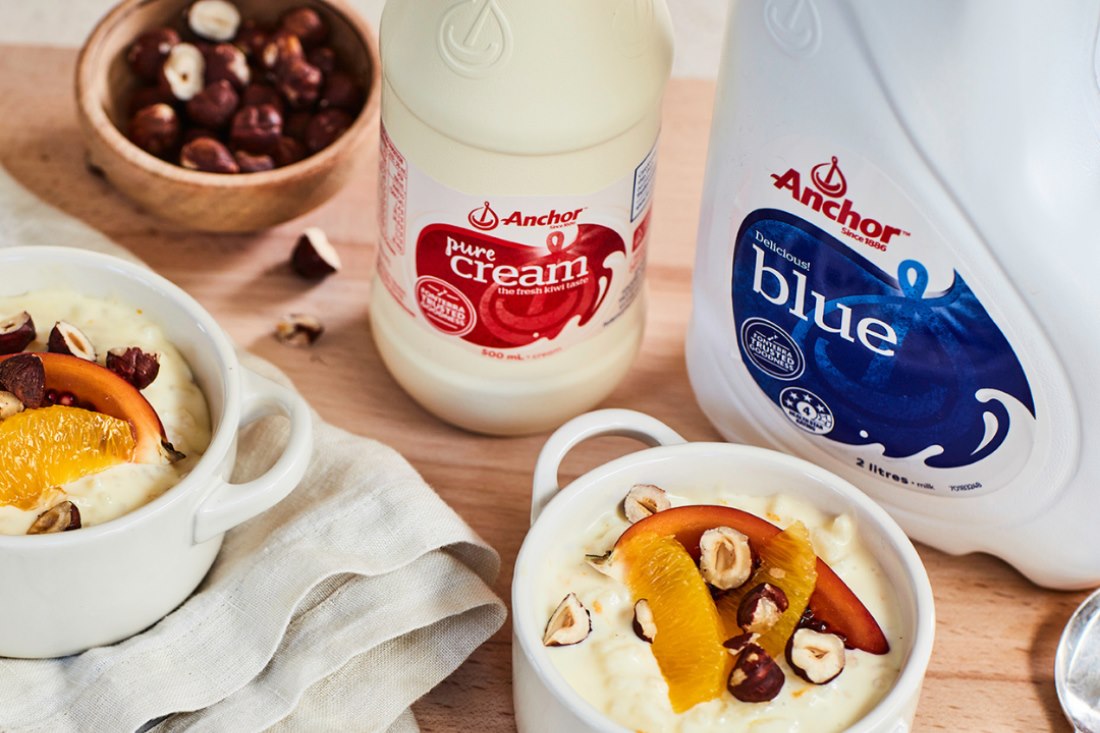When most people think about dairy, their first thought may be that it is a source of calcium, and that it’s good for strong bones.
Others, however, hold fairly different opinions when it comes to the health benefits of dairy, influenced by outdated research or incorrect information.
So when it comes to dairy: what is fact and what is fiction?
Myth: Milk causes mucous
Fiction. The texture of milk can leave you with a temporary perception of mucus in the mouth and throat. However, scientific research has shown that milk consumption does not actually create the production or formation of mucus or phlegm. If you do have a cold, milk can still be consumed in moderation as part of a healthy eating plan, providing both important fluids and essential nutrients while you are unwell.
Myth: Trim milk is watered down
Fiction. Water is never added to lite or trim milk. The only difference is the proportion of cream we remove to get the right fat level. This gives lighter-tasting milk while still providing a rich bundle of essential nutrients, making it a great choice if you’re looking for a lower-calorie option.
Myth: Trim milk contains added sugar
No sugars are added. When you look at a label on your bottle of milk, trim milk may contain around 0.2g more naturally occurring milk sugar (lactose) than full-fat milk, per 100mL. This is because when you reduce fat levels, the levels of everything else within the milk, including protein, calcium and lactose will increase proportionally. So while lowering the fat results in a slightly higher level of sugar, it’s not because it has been added!

Myth: You can’t eat dairy if you have lactose intolerance
Fiction. People with lactose intolerance do not need to avoid dairy foods. Most people with clinically diagnosed lactose intolerance can consume up to a glass of regular milk and other dairy products without any concerns, particularly cheese and yoghurts because they are naturally low in lactose, or when consumed as part of a meal. In addition, Anchor Zero Lacto milk is also available for those who do suffer from lactose intolerance.
This is different from dairy protein allergy where all dairy must be avoided. Check out our article for more information. If you think you might have lactose intolerance, see your health professional for a proper diagnosis and dietary advice tailored to your individual needs.
Myth: New Zealanders already eat enough dairy
In NZ we aren’t getting enough calcium in our day, with nearly two-thirds of us having inadequate intakes according to the Ministry of Health NZ 2008/2009 National Nutrition Survey. Milk is the largest contributor of calcium to our diet in New Zealand. To get enough calcium we could boost our intake of dairy. Ministry of Health NZ Dietary Guidelines recommends we consume at least 2 servings of dairy a day. Milk and milk products are highly nutritious, containing protein, vitamins and a rich source of minerals such as calcium and phosphorus.
Myth: Dairy contributes to osteoporosis
Bone strength is related to the density of bone; so in general, the denser your bones the stronger they are. Osteoporosis is a condition of low bone density associated with a higher risk of bone fracture.
Calcium is one of the main dietary factors affecting bone density. Public health experts and scientific authorities such as the International Osteoporosis Foundation recommend the consumption of milk and dairy products as the most readily available dietary sources of calcium for the development and maintenance of strong bones.
Myth: Humans aren’t meant to drink cow’s milk
This is an interesting theory, but one that isn’t supported by science. It suggests that the human body hasn’t been ‘designed’ or hasn’t evolved to tolerate the milk of another animal. However, the evolution of our culture and genetics tells another story - beginning with the domestication of animals, when farming replaced hunting and gathering around 10,000 years ago.
Once cow’s milk was recognised as a potential food source, it was initially consumed as products such as yoghurt and cheese which preserved the milk, enabling it to be stored to be available in seasons of low milk production. Also, yoghurt and cheese were easier to transport and were better tolerated than milk due to their lower lactose content.
Since then, the human body has evolved genetically over thousands of years to produce lactase, the enzyme that helps us digest and tolerate lactose, throughout our lives. This adaptation opened up an important source of nutrition to sustain communities and ensure survival when harvests failed and is the reason we can enjoy a delicious glass of milk to this day.
Myth: All the milk in New Zealand is made from milk powder
Fiction! All Anchor fresh milk is exactly that, fresh! We don’t make them from milk powder as it wouldn’t taste as fresh or be energy efficient! It takes a lot of energy to turn milk into milk powder! In NZ we are lucky to have plenty of milk around so can easily bottle fresh milk! NZ makes a variety of dairy products such as milk powders & UHT milk which last a lot longer than fresh milk.
The majority of these powders & UHT products are exported overseas often to countries where they may have limited availability of fresh milk. In some countries where access to fresh milk is challenging, some companies sell reconstituted milk that is made from milk powder.
Check out our article here about how we make Anchor fresh milk in NZ. Anchor do also sell a range of milk powders and UHT milk which are a convenient choice when you’re not near a fridge!


